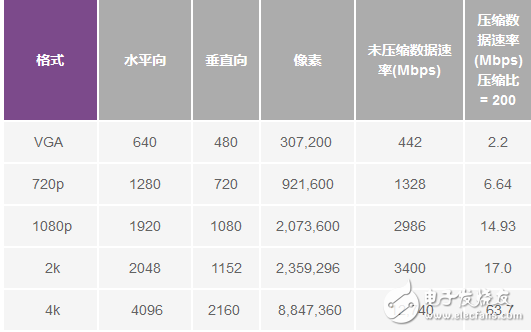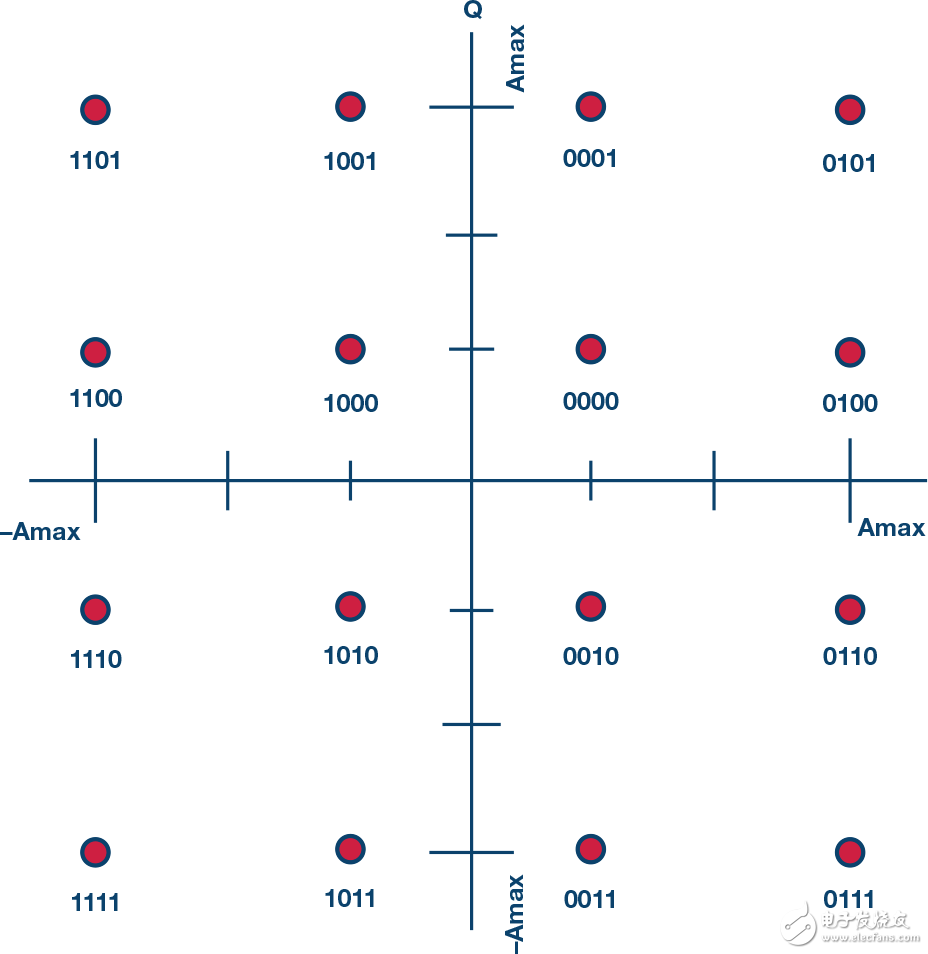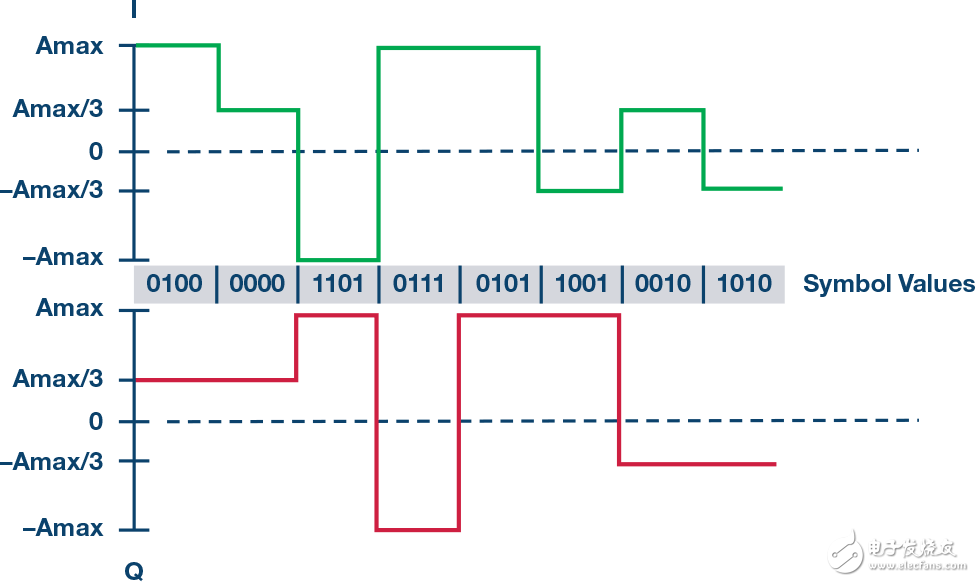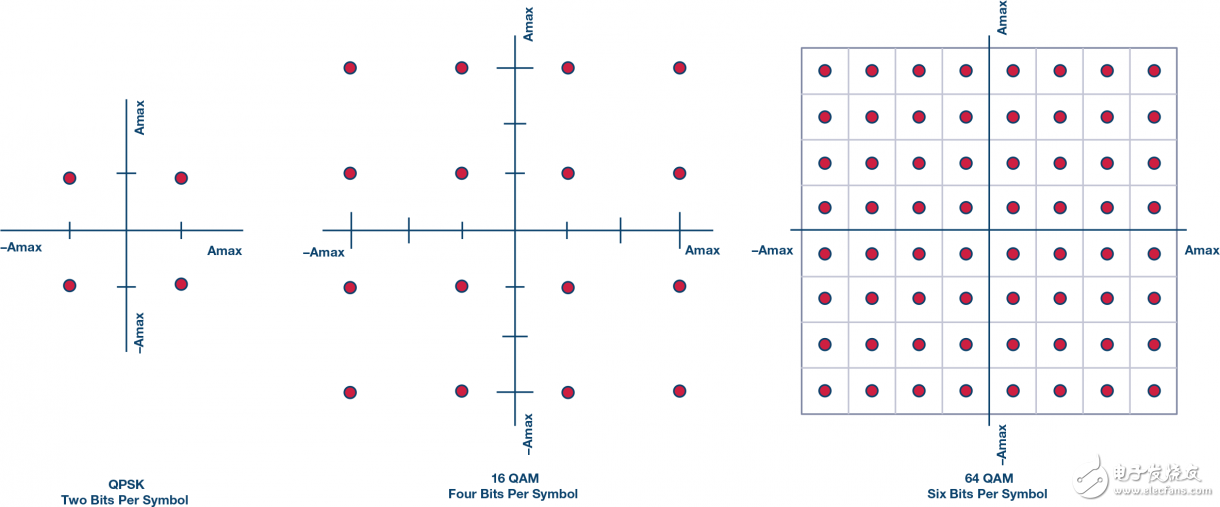Integrated radio frequency (RF) agile transceivers are not only widely used in software-defined radio (SDR) architectures for cellular telephony base stations, such as multi-service distributed access systems (MDAS) and small base station units, but also for industrial, commercial, and Wireless HD video transmission in military applications such as unmanned aerial vehicle (UAV) applications.
This article will analyze the process of using the AD9361/AD93642, 3 integrated transceiver IC to achieve broadband wireless video signal chain, as well as the amount of data transmitted, the corresponding RF occupied signal bandwidth, transmission distance and transmission power. The implementation of the OFDM physical layer will also be described, and the frequency hopping time test results for avoiding radio frequency interference are listed. Finally, we will discuss the advantages and disadvantages of Wi-Fi and RF agile transceivers in broadband wireless applications.
Signal chainFigure 1 shows a simplified wireless video transmission scheme using the AD9361/AD9364 and BBIC. The camera captures the image and sends the video data to the baseband processor via Ethernet, HDMI, USB or other interface. Image encoding/decoding can be handled by hardware or FPGA. The RF front end includes RF switches and LNAs and PAs connected to programmable integrated transceivers.

Figure 1. Schematic diagram of wireless video transmission
How much data needs to be transferredTable 1 lists the significant differences between the uncompressed data rate and the compressed data rate. By using High Efficiency Video Coding (HE VC) technology, which is H.265 and MPEG-H Part 2, you can reduce data rates and save bandwidth. H.264 is currently the most commonly used format for video, compression, and video content distribution. It represents a huge advancement in video compression technology and is likely to replace the widely used AVC (H.264 and MPEG-4 Part 10) technology in the future.
Table 1 summarizes the uncompressed and compressed data rates for different video formats. The assumption is that the video has a bit depth of 32 bits and a frame rate of 60 fps. In the 1080p example, the compressed data rate is 7.45 Mbps, and the data rate is more easily processed by the baseband processor and the wireless physical layer.
Table 1. Compressed data rate

By varying the sample rate, digital filter, and decimation parameters, the AD9361/AD9364 can support channel bandwidths from below 200 kHz to 56 MHz. The AD9361/AD9364 are zero-IF transceivers with I and Q channels for transmitting complex data. The complex data contains the real and imaginary parts, corresponding to the I channel and the Q channel, respectively, which are located in the same frequency band, so the spectral efficiency is twice that of the single channel spectrum. Compressed video data can be mapped to I and Q channels to create constellation points, ie symbols. Figure 2 shows an example of 16QAM with each constellation point symbol representing four binary bits.

Figure 2. 16 QAM constellation diagram.

Figure 3. I and Q digital waveforms in the constellation.

Figure 4. Pulse shaping filter response.
For single-carrier systems, the I and Q digital waveforms need to pass through a pulse shaping filter before entering the DAC, shaping the transmitted signal within a limited bandwidth. Pulse shaping can use FIR filters, and the filter response is shown in Figure 4. In order to ensure information fidelity, the minimum signal bandwidth corresponding to the symbol rate must be met. The symbol rate is proportional to the compressed video data as shown in the following equation. For OFDM systems, IFFT should be used to modulate complex data onto individual subcarriers to transmit signals over a limited bandwidth.
The number of bits corresponding to each symbol depends on the modulation order.

Figure 5. Modulation order.
The occupied signal bandwidth is
Where α denotes the bandwidth parameter of the filter.
According to the previous formula, you can deduce

Thus, we can calculate the RF occupied signal bandwidth, as shown in the summary in Table 2.
Ceramic Insulator,Ceramic Electrical Insulators,Ceramic Standoff Insulators,Ceramic Isolators
Yixing Guangming Special Ceramics Co.,Ltd , https://www.yxgmtc.com
